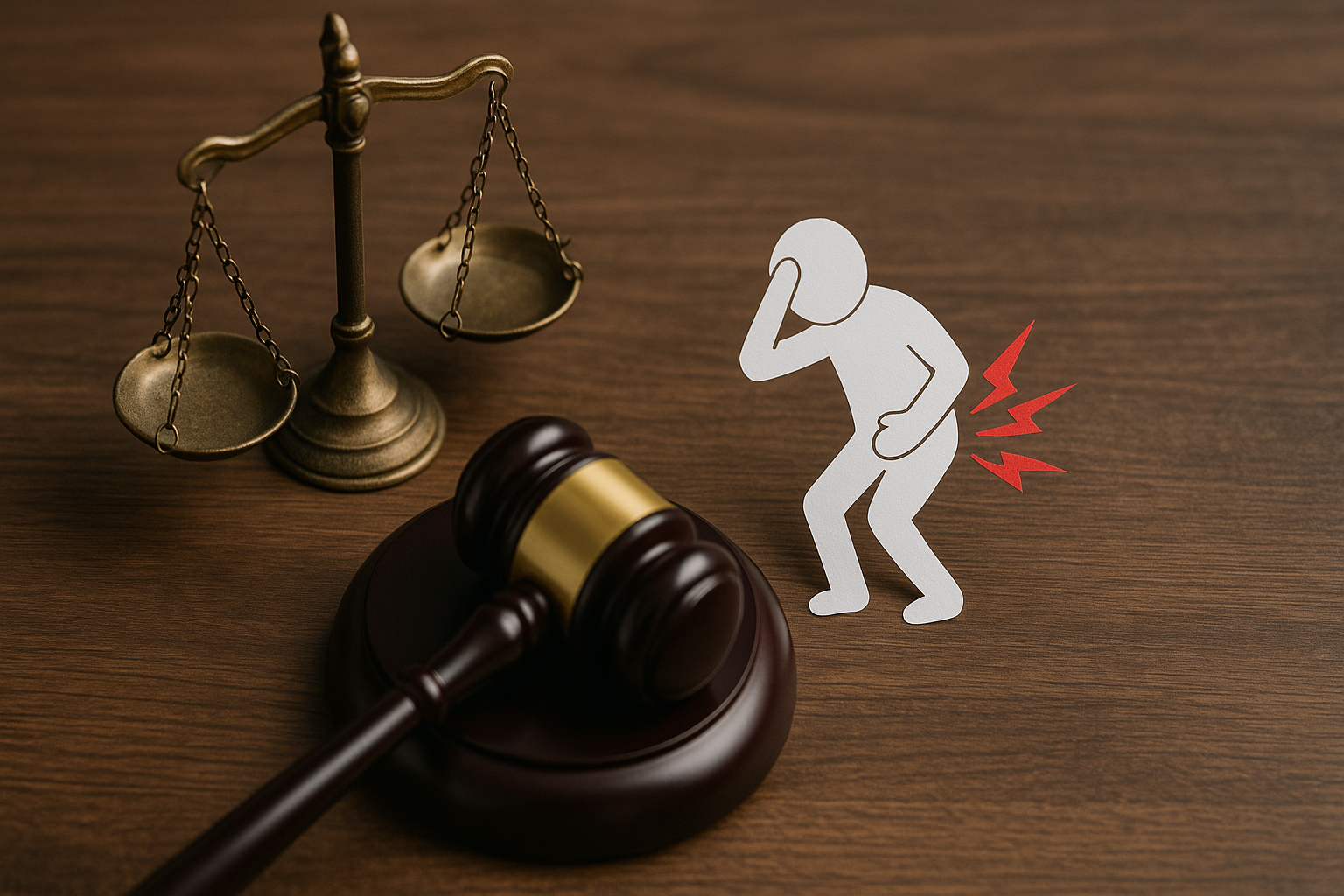When you’re injured due to someone else’s negligence, your damages go beyond medical bills and lost wages. One of the most significant yet often misunderstood parts of a personal injury case is pain and suffering. Understanding how it works can help you maximize your claim and ensure you receive fair compensation.
What is pain and suffering?
Pain and suffering refers to the physical and emotional distress a person endures after an injury. It is distinct from economic damages such as medical costs, rehabilitation, or lost wages. Because pain and suffering are non-economic damages, they lack a clear dollar value, making them more subjective and sometimes more contested in court or settlement negotiations.
Non-economic damages like pain and suffering are intended to compensate a victim for intangible harms: chronic pain, psychological trauma, diminished enjoyment of life, and ongoing discomfort. The law acknowledges that an injury’s impact isn’t purely financial but also deeply personal and emotional.
Types of pain and suffering
There are two primary categories of pain and suffering that victims may claim in a lawsuit:
- Physical pain and suffering: This covers ongoing aches or chronic pain, loss of function, scarring, and complications from the injury.
- Emotional pain and suffering: This includes depression, anxiety, post-traumatic stress, grief, loss of enjoyment in life, or mental anguish.
A combined claim often blends both physical and emotional components, since most serious injuries carry consequences for both body and mind.
Why pain and suffering matter in a lawsuit
Pain and suffering play a critical role in personal injury claims because they reflect the full human cost of an injury, not only the out-of-pocket expenses. Compensation for non-economic damages often forms a large portion of what is negotiable or litigable.
Insurance companies frequently seek to minimize pain and suffering awards by questioning severity, duration, or credibility. A strong case with convincing evidence can push back against such reductions and help you obtain fairer compensation.
Because pain and suffering damages can significantly increase a settlement value, understanding how they work is essential before entering negotiations or court.
How pain and suffering are calculated
Because non-economic damages are subjective, courts and insurers use certain established methods to assign value. Two common methods are:
- Multiplier method: You total your economic damages (medical bills, lost wages) and multiply by a factor (often between 1.5 and 5) based on severity.
- Per diem method: A daily rate is assigned for your pain, then multiplied by the number of days you are expected to suffer.
Some jurisdictions or insurers may combine or adapt these methods depending on the case’s facts. The key is that the method must align with severity, duration, and supporting evidence.
Evidence needed to prove pain and suffering
Simply stating that you are suffering is insufficient. You must back your claim with credible evidence. The following are commonly relied upon:
- Medical records documenting treatment, diagnoses, prognoses
- Expert testimony (doctors, psychologists) linking the injury to pain or emotional harm
- Personal journals or diaries documenting daily pain, limitations, changes in life
- Testimony from friends, family, coworkers about how you’ve been affected
Strong evidence helps counter attempts by insurers to dispute or reduce your claim. Consistency over time – through records, reports, and testimony – is vital to credibility.
Factors influencing the value of non-economic damages
Several elements can raise or diminish your pain and suffering award:
- Severity of injury (fractures, nerve damage, disfigurement)
- Duration of recovery or permanence of impairment
- Age, overall health, prior condition
- The effect on daily life (ability to work, hobbies, relationships)
- Credibility of the claimant and consistency of evidence
- Jurisdictional laws (caps, statutes limiting awards)
Below is a comparison table illustrating how these variables might impact valuation:
| Factor | Positive effect on value | Negative effect on value |
|---|---|---|
| Severe injury, long recovery | pushes multiplier or daily rate higher | mild injury or fast recovery reduces value |
| Disruption of life, lost enjoyment | supports larger award | minimal lifestyle change weakens claim |
| Strong evidence and credibility | gives insurer reason to concede | weak or inconsistent documentation undermines claim |
Jurisdictional limits and caps
Because laws differ by state or country, you must consider local limits. Some jurisdictions cap non-economic damages, especially in medical malpractice cases. In other places, statutes may permit very high awards.
Understanding whether your area imposes caps is essential before arguing for a high pain and suffering award. An experienced attorney must tailor strategy to your jurisdiction’s rules, knowing whether to push for full value or work within constraints.
In jurisdictions with no caps, your claim’s upper bound often depends on precedent and comparable cases. Your attorney should research similar verdicts or settlements to set benchmarks.
Common defenses insurers use
Insurance companies and defense counsel often attempt to reduce pain and suffering claims through tactics such as:
- Arguing your injury is exaggerated or preexisting
- Suggesting your recovery should have been faster
- Disputing your credibility or the causation link
- Claiming lack of documentation, gaps in records, or inconsistencies
To counter these, your lawyer should anticipate those defenses, shore up your evidence, and emphasize consistency, expert support, and documented impact on your life.
Negotiating vs. going to trial
When seeking compensation for pain and suffering, strategy matters. Many cases settle out of court, but some must go to trial for maximum value.
Negotiation tips:
- Present a demand package that includes non-economic damages clearly and confidently
- Be ready to explain and justify your multiplier or daily rate
- Use expert reports, testimony, and comparisons to support higher figures
Trial preparation:
- Prepare witnesses, experts, and demonstrative exhibits
- Emphasize a narrative of injury impact, not just numbers
- Be ready to cross-examine defense experts and expose weak arguments
Your attorney should balance the costs, risks, and benefits of settlement versus trial, always aiming to maximize your recovery.
Seeking fair compensation for pain and suffering
Pain and suffering are more than just legal terms. They represent the physical and emotional toll an injury takes on your life. Proving these damages requires evidence, persistence, and a strategic legal approach to ensure you are fully compensated.
At Knapp Moss, our experienced attorneys are dedicated to fighting for injury victims. We understand how to build strong cases backed by medical documentation, expert testimony, and persuasive legal arguments. Whether you’re negotiating with insurance companies or pursuing a lawsuit in court, we are committed to helping you recover the compensation you deserve for both economic and non-economic damages.
Contact Knapp Moss for a free consultation.
Frequently Asked Questions
Yes, some states place caps on non-economic damages, especially in medical malpractice cases.
It’s possible in some cases, but having a documented physical injury makes it much easier to prove emotional distress.
The timeline varies depending on the complexity of the case, negotiations, and whether it goes to trial.




